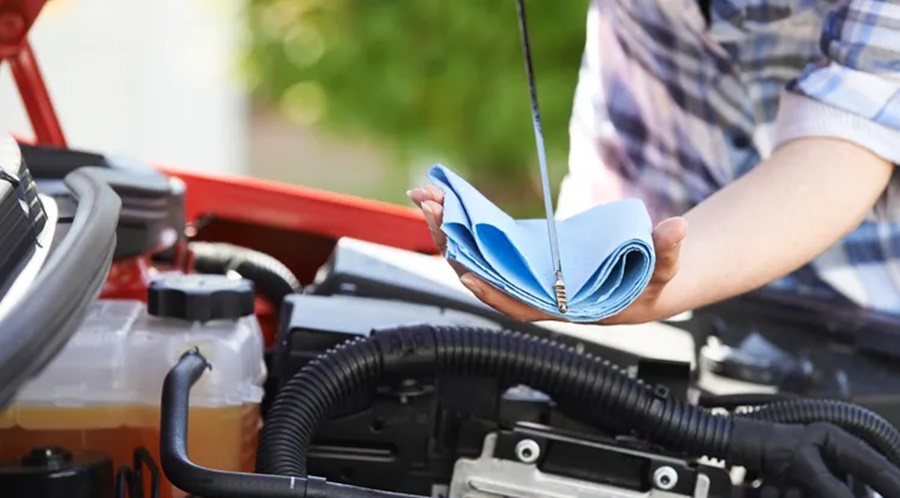How to check the oil level correctly?
To ensure that your car runs "like lubricated" for as long as possible, you should check the oil level at regular intervals.

If you forget to do this, you risk engine damage. That’s how it works!
“auto.de” recommends that you check at least once a month whether there is enough lubricating fluid in the oil tank. Otherwise there is a risk of serious damage to the engine. According to “autoscout24.de”, older vehicles from the age of seven in particular often have an oil level that is too low – regular checks are therefore even more important here.
Instructions to measure the oil level
To properly check the oil level, the car should be parked on a flat, level surface with the engine warm. TÜV Rheinland recommends waiting about five minutes before starting the measurement. Then the engine oil in the oil pan has run down and the value is more accurate. The residual heat from the engine will help you get the correct reading as heated oil expands.
Open the bonnet by pressing the release lever below the steering wheel. Raise the hood using the locking bar. Now you have to find the dipstick in the engine compartment, which is usually marked by a conspicuous color (usually yellow). There is also a ring at the top of the wand to help you pull out the wand more easily. If you cannot find the rod directly or are unsure, a look at the manufacturer’s operating instructions will help.
Use the dipstick correctly
Pull out the dipstick and wipe it with a clean, lint-free cloth or paper towel. Corresponding paper towels are usually located next to the petrol pumps at the petrol station. There are two indentations at the bottom of the dipstick. These are the maximum and minimum oil level marks.
Reinsert the dipstick all the way into the hole. Then pull the stick back out and check where the gold to black engine oil on the dipstick reaches. If the oil residue is between the two indentations, there is enough oil. Ideally, the oil level should be halfway to three quarters of the way between “min” and “max”. If the oil residue is below the minimum oil level line, you should urgently add oil.
Instructions for topping up the oil
Find out in advance which engine oil is right for your car. For example, a petrol engine requires different engine oil than a diesel engine. The viscosity, i.e. the flowability of the oil, must also be taken into account. If in doubt, check the operating instructions for your car to see which oil the manufacturer recommends. Alternatively, there are a number of websites on the Internet where you can search directly for your vehicle model and have the right motor oil and viscosity class displayed.
Carefully unscrew the oil reservoir cap. The container is usually easy to find because an oil can is usually stamped into the lid. If in doubt, the instructions for the car will also help here. Fill the appropriate oil slowly and carefully into the opening of the oil tank. Wait a few minutes for the oil to drain down the oil pan. Then use the stick to check whether the maximum filling quantity has already been reached.
Do not add too much oil
Note that too much oil is also harmful. The distance between minimum and maximum on the oil dipstick is usually one liter. If there is too much oil, oil mist can form which burns uncleanly in the engine’s combustion chambers. Too much oil is also bad for the seals. Foam can also form, which under certain circumstances can lead to a break in the lubricating film. As a result, steel rubs against steel – engine parts such as pistons and bearings deform and there is a risk of major engine damage.
When is an oil change due?
It really depends on the engine and how much you drive. Depending on the vehicle, the interval is between 15,000 and 40,000 kilometers. Check your car’s owner’s manual for exact numbers. Allianz insurance recommends that anyone who drives a lot on average, i.e. 10,000 to 15,000 kilometers per year, should have their oil changed about every 1.5 to 2 years.


